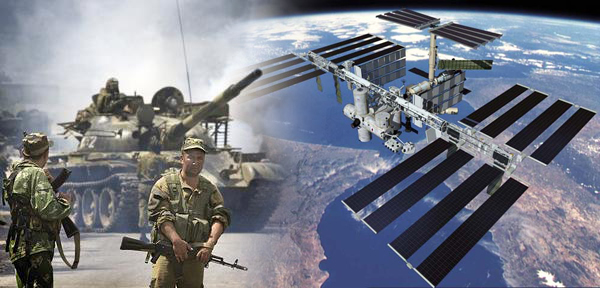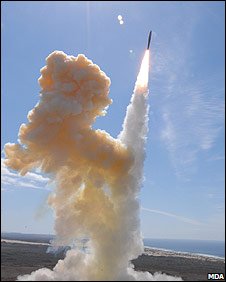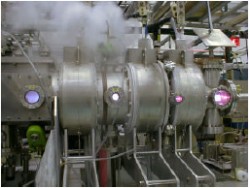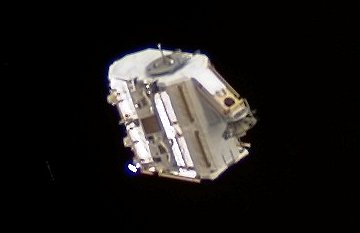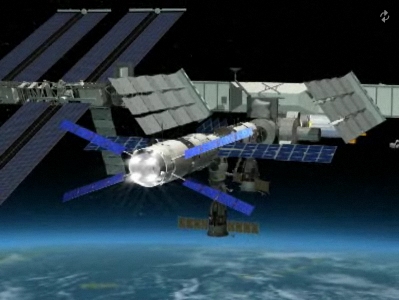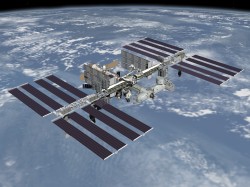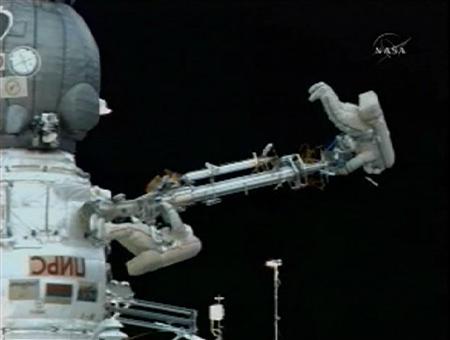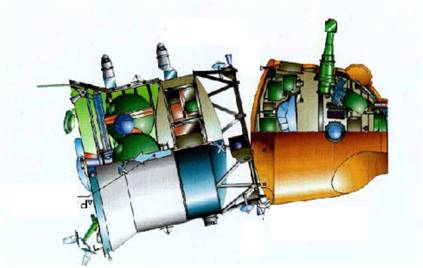[/caption]
In a dress rehearsal for the disposal of the European Automated Transfer Vehicle (ATV) in two days time, the Russian Progress 29 resupply ship was undocked from the International Space Station (ISS) on Monday from its Earth-facing berth on the station’s Russian Zarya control module. The vessel, having performed its resupply duties back in May, has now been filled with waste from the crew and sent on its week-long journey toward a fiery re-entry. But the tough automated resupply ship still has some work to do, it will carry out some experimental rocket tests before it makes its final plunge over the Pacific Ocean…
The Russian automated resupply vessel has been overlooked recently. This unmanned craft has a long history of space supply tasks, ferrying food, water, equipment and other supplies to the orbital crews and then being filled with rubbish to be disposed of during re-entry. The current expendable Progress vehicle, the Progress M (interestingly based on the manned Soyuz design), was first launched in 1989 to service the Mir Space Station. 43 flights later, it was chosen as the principal resupply vehicle for the ISS. The current Progress mission, Progress 29, marks the 29th Progress flight to the orbital outpost, but unfortunately, like all the Progress flights before it the ship has undocked and it will begin deorbit manoeuvres to burn up in the atmosphere.
According to NASA, the undocking procedure was completed as expected at 3:46 pm EDT, Monday afternoon. “It went very well, exactly as planned,” stated NASA spokesperson Kelly Humphries at the Johnson Space Center in Houston. Russian Federal Space Agency officials added that Progress 29 will remain in orbit until September 9th to carry out experiments on the plasma environment surrounding its engines. Once complete, the craft will be instructed to begin its final kamikaze task and plunge into the atmosphere over the South Pacific. Should any charred remains be left over after the burn, the debris will fall safely into a pre-designated area of the ocean.
Progress 29 was launched on May 14th and docked with the ISS two days later. This mission replaced Progress 28, which in April had also been unceremoniously dropped from space. Progress 29 delivered 2.3 tonnes of supplies to the ISS crew which currently include cosmonauts Sergei Volkov and Oleg Kononenko with astronaut Greg Chamitoff.
But this is only the first part of ISS dumping duties this week. On Friday, ESA Jules Verne will end its work (the first ever ATV mission), be filled with station trash and also dropped from orbit. I’m sure the ATV looked down nervously on Progress 29 as it disappeared from view knowing it’s only two days from the long drop back to Earth…
Source: Space.com



